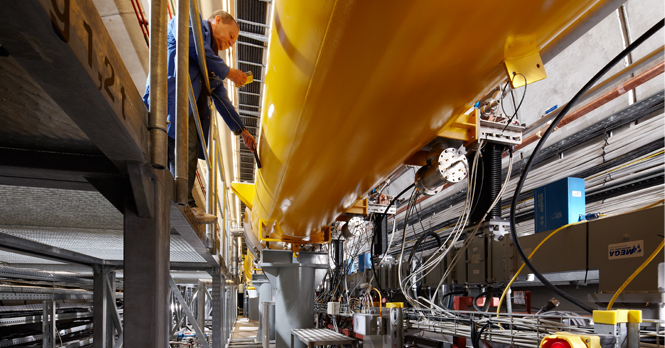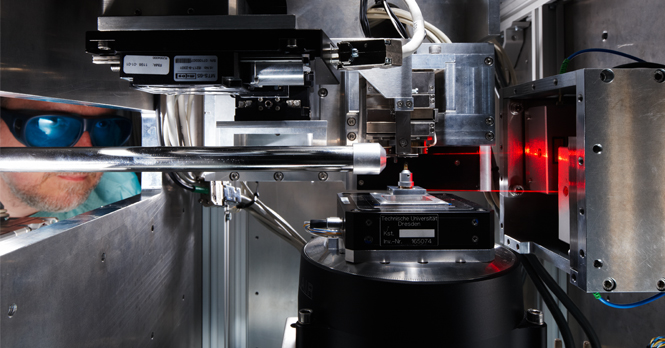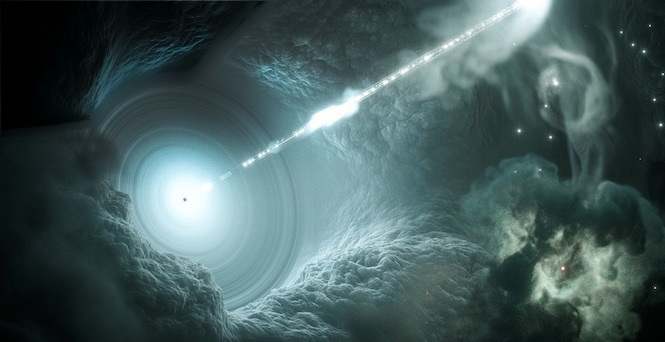URL: https://www.desy.de/about_desy/desy/research_for_the_future/DESYinform03-11-engWEB_eng.html/@@siteview
Breadcrumb Navigation
Research for the future
Research for the future
The research carried out at DESY is extremely diverse. The scientists who work here are looking for the tiniest building blocks of matter that make up our world, developing innovative high-tech materials and searching for new mechanisms of action for future medications. As one of Germany’s largest research centres, DESY carries out fundamental research that creates new knowledge and new conceptual approaches. This research is the basis on which the challenges of the future can be mastered: issues such as energy supply, climate protection and healthcare require long-term thinking, sustainable solutions and new technologies.
Research at DESY focuses on four areas: accelerators, photon science, particle physics and astroparticle physics.

Accelerators
Speed machines for top performanceParticle accelerators are among the most important tools for research. They speed up tiny, electrically charged particles nearly to the speed of light – that is, to almost 300 000 kilometres per second. A broad range of scientific disciplines benefit from these fast particles. Particle physicists bring them together in head-on collisions to investigate the tiniest building blocks of matter. Chemists, materials scientists and biologists use accelerators to generate the brightest X-ray radiation in the world in order to examine diverse materials ranging from aircraft turbines to microchip semiconductors and proteins that are essential to life. Medical researchers use accelerators for cancer therapy, as the high-energy particle beams can be targeted to destroy tumours.

PHOTON SCIENCE
The nanocosmos in X-ray lightThe light sources at DESY are based on particle accelerators and generate extremely intense X-ray radiation. These “supermicroscopes” reveal the atomic details and the behaviour of materials and biomolecules – and form the basis for developing new technologies.
One example is nanomaterials, i.e. materials with structures only millionths of a millimetre in size. They play an ever greater role in everyday life, with applications ranging from computer technology to extremely scratch-resistant surfaces and optimized therapeutic procedures in medicine. New energyefficient materials for fuel cells and solar cells can be developed as well. Medical science also benefits from the interdisciplinary application potential of the DESY light sources: scientists elucidate molecular mechanisms that form the basis for pharmaceutical companies to develop new medicines.
With the construction and development of excellent light sources and interdisciplinary research collaborations, DESY is one of the world’s leaders in photon science.

Particle Physics
How does the universe work?Particle physicists are investigating the fundamental mysteries of the universe: what holds the cosmos together, and how do particles acquire their mass in the first place? When DESY was founded in 1959, the primary task of the centre was to investigate the smallest particles. Over the decades, DESY has put into place central pieces of the mosaic of particle physics. With the PETRA storage ring, researchers discovered the gluon, the “glue particle” that holds the quarks together and without which there would be no atoms. Later, they used the HERA accelerator to investigate the proton with unprecedented precision. The surprising result: the inner workings of this particle, which is so important for our world, turned out to be much more complex than expected.
Today, a number of DESY researchers are taking part in the large experiments at the LHC in Geneva, the most powerful accelerator in the world. Others are peering deep into the cosmos. Using spectacular detectors and telescopes, the experts are analysing exotic particles that come from far corners of the universe and could provide information about fascinating phenomena, such as black holes, exploding stars and inconceivably intense eruptions of radiation.

Windows on the universe
Messenger particles for a view on the cosmos
The DESY scientists also conduct research in astroparticle physics, an interdisciplinary field that combines methods and questions from astrophysics, cosmology and particle physics. Various kinds of particle from the cosmos constantly reach the Earth – particles that can provide insights into the happenings in the depths of the universe. The DESY researchers in Zeuthen use two of these cosmic messengers, neutrinos and gamma rays, to uncover the secrets of stellar explosions, cosmic particle accelerators like the surroundings of black holes, or of dark matter.
The Earth is constantly bombarded by particles from the vast expanses of the cosmos, which incessantly rain down on the atmosphere and set off whole avalanches of secondary particles, which traverse the complete atmosphere. Some of these particles from space reach vertiginous energies, up to ten million times higher than those delivered be the LHC, the most powerful accelerator man ever built. But where are the sources of these high-energy projectiles? Are these particles messengers from the immediate surroundings of black holes, which swallow matter like giant maelstroms, hurtling energy into space in the process in the form of extended matter rays? Or could other astronomical objects also act as cosmic accelerators? Can cosmic rays provide insights about the mysterious dark matter? Researchers from DESY in Zeuthen collaborate with experts from all over the world to investigate these questions.


